How To Start An Online Store Without Inventory In 2025
I'm looking for...
Stepping into the world of ecommerce doesn’t always mean investing in huge inventories. With the right strategy, starting an online store without inventory is not just possible but highly profitable. So, wondering how to start an online store without inventory? Stop here, because I’ve got you covered.
Times have changed, and so have the rules of retail. The digital landscape offers multiple avenues for entrepreneurs to sell products without stocking them.
This article peels back the layers of methods like dropshipping, affiliate marketing, print-on-demand, and selling digital products.
These methods are transforming the ecommerce landscape, making it easier for anyone to start an online business without worrying about inventory management.
Imagine not having to deal with warehousing costs or the logistics of shipping! That’s the power of running an inventory-free ecommerce business. So, let’s get started!
Create Your Online Store in just 5 Minutes – For Free
Pick your niche, our AI builds your store, add 10 winning products and we teach you how start selling today. Start picking your niche
Dropshipping: A Profitable Way to Sell Without Inventory
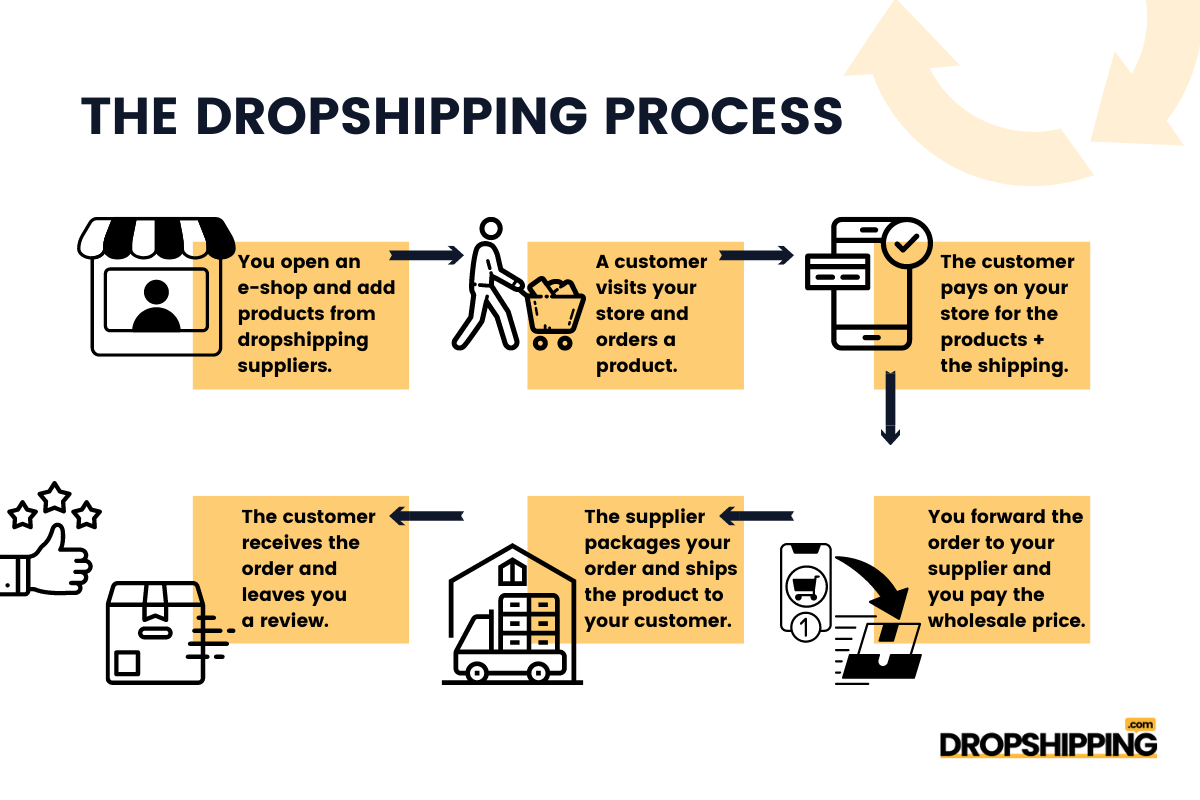
Dropshipping is an order fulfillment method where a store doesn’t keep the products it sells in stock.
Instead, when a store sells a product using the dropshipping model, it purchases the item from a third party and has it shipped directly to the customer.
As a result, the seller never sees or handles the product.
So, as you can see, it is the number one option to start an online store without inventory
 Advantages of Dropshipping
Advantages of Dropshipping
- Lower Start-Up Costs: You don’t need to invest heavily in inventory, which minimizes risk and upfront capital.
- Flexibility: Easily test different products and markets without purchasing bulk inventory.
- Scalability: As sales grow, you don’t need to worry about inventory management or warehouse space.
 Challenges in Dropshipping
Challenges in Dropshipping
- Competition: With low barriers to entry, many stores may sell similar products.
- Supplier Reliability: Your brand reputation depends on third-party suppliers’ reliability and product quality.
- Thin Margins: Since anyone can start easily, margins can be lower due to price competition.
 Strategies For Success
Strategies For Success
- Quality Suppliers: Partner with reliable suppliers like Spocket to ensure product quality and customer satisfaction.
- Branding: Focus on building a strong brand that stands out from the competition.
- Customer Service: Provide exceptional service to create loyal customers and encourage repeat business.
So, here’s how I personally deal with this stuff.
First things first, I personally use reputable supplier directories to find trustworthy suppliers and build relationships.
So, Dropshipping.com offers a list of more than 2000 reliable suppliers. You can narrow down your search by your dropshipping area, supplier whereabouts, shipping prices, and more.
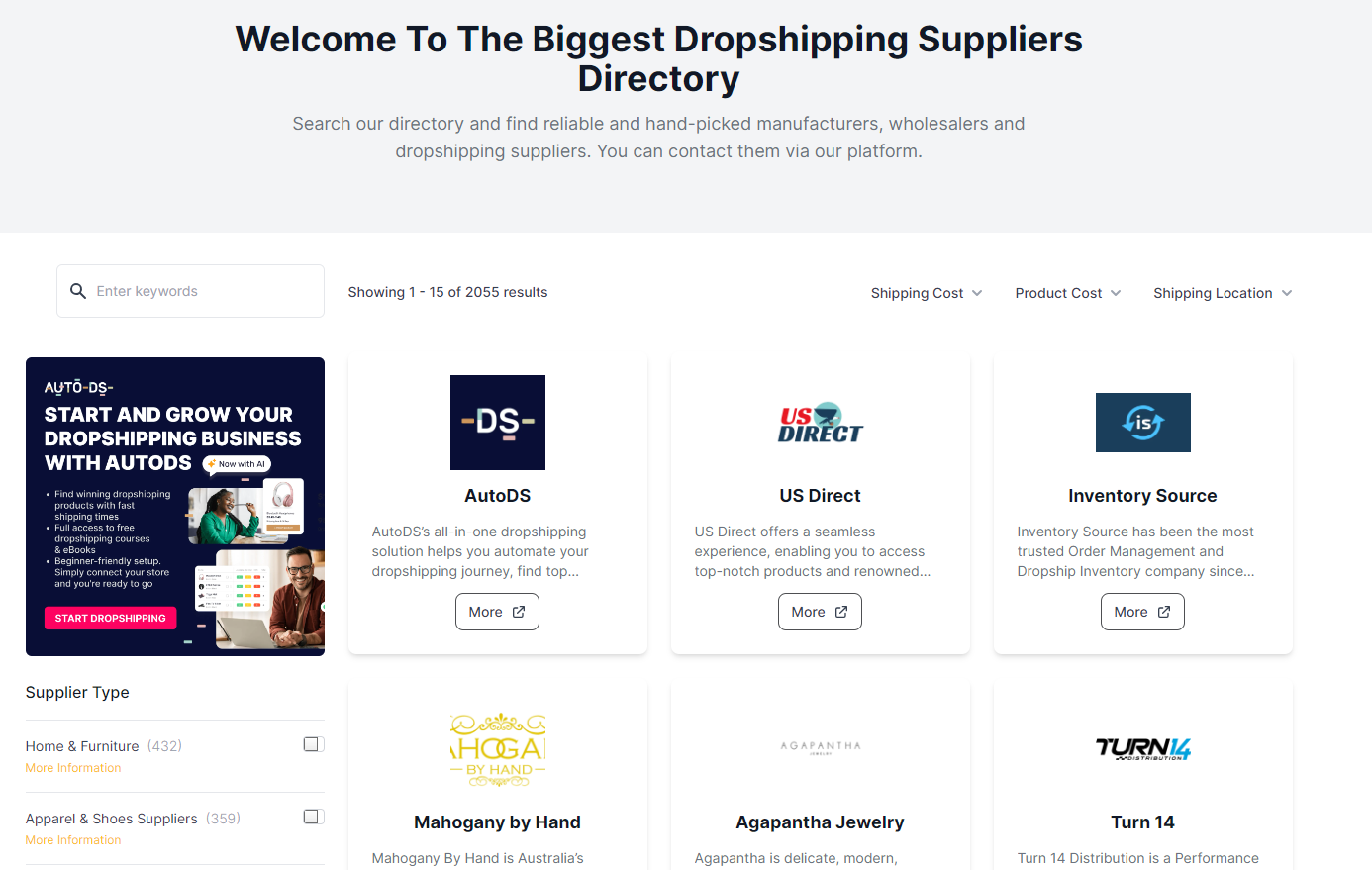
Also, you can discover key details about each supplier, like pricing, order processing time, minimum order quantity (MOQ), warehouse location, and product variety.
Next, when it comes to building a brand image, I suggest you to try print on demand services, and private label dropshipping.
For example, Zendrop dropshipping is a big marketplace where entrepreneurs find affordable products to add to their stores, selling them for a higher price. Plus, it offers great private label services.

Lastly, I always make sure to deliver great customer service. Thus, I am accessible to users 24/7, and I give them options to contact me over social media, phone, email, SMS, etc.
So, I use Tidio myself. This marketing tool lives up to its slogan, “Live Chat Boosted with Bots,” with its easy-to-use interface.
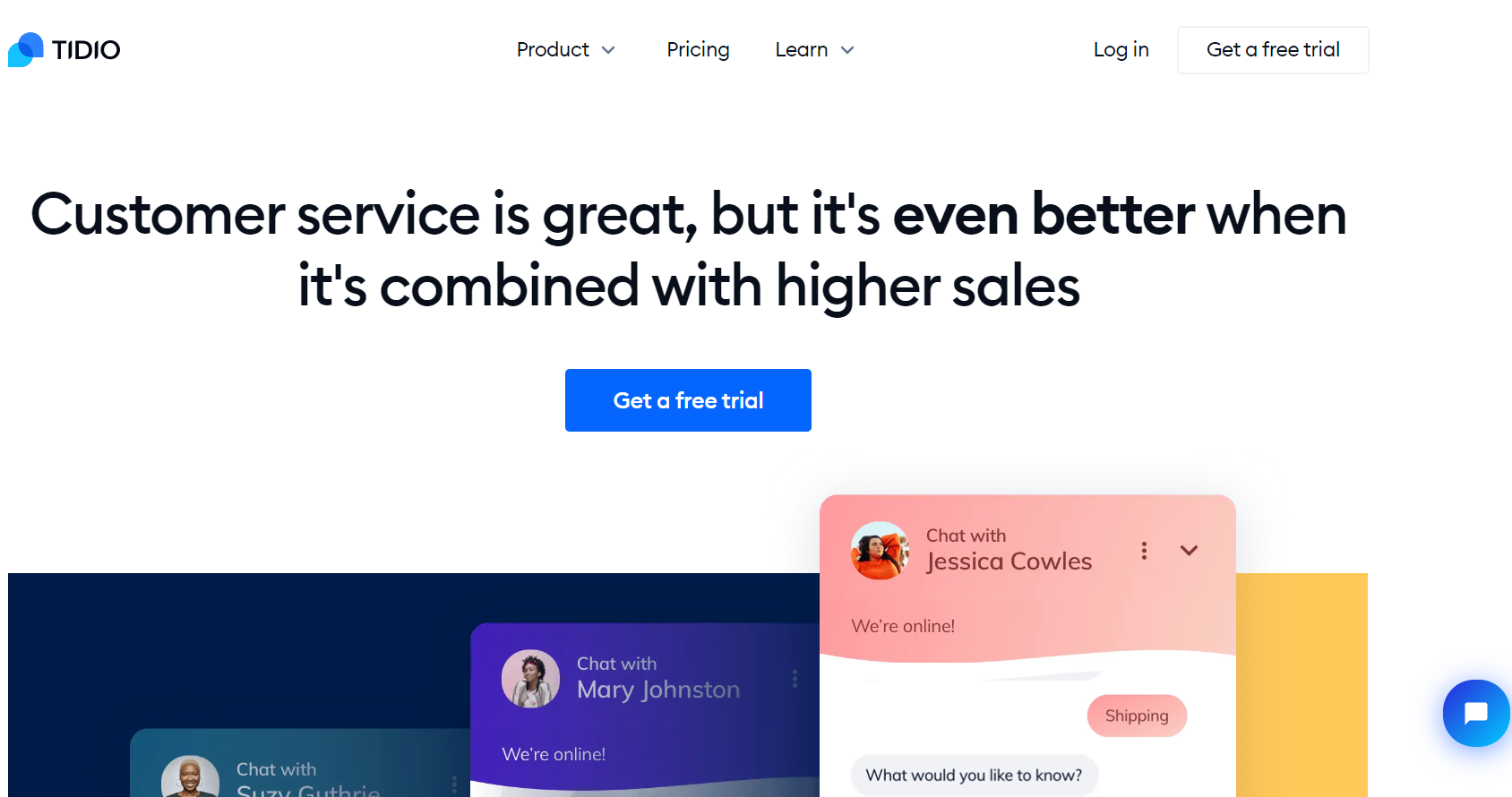
The live chat widget ensures your business is always reachable. AI-driven chatbots interact with customers instantly, boosting your sales. And it syncs across multiple channels too.
Furthermore, I always encourage customers to leave feedback because I stand by the idea that customers listen to customers. So, it’s a great marketing trick.
By navigating these challenges with smart strategies, you can set up your online store for success without dealing with traditional inventory management.
2. Driving Sales with Affiliate Marketing: An Alternative Approach to Selling Without Inventory
Affiliate marketing focuses on promoting others’ products instead of selling directly, making it a unique method to start an online store and boosting sales without inventory.
In this approach, you earn commissions by referring customers to other businesses’ products or services.
How Does Affiliate Marketing Work?
- You sign up for an affiliate program and receive a unique affiliate link.
- You promote the products or services using your affiliate link.
- When someone clicks on your affiliate link and makes a purchase, you earn a commission.
For example, using UpPromote, you can invite affiliates to join by filling out a form and letting them promote products using coupons or links.

You can create as many offers as you want. Don’t forget, you can try out the app for free with a 14-day trial.
 Advantages Of Affiliate Marketing
Advantages Of Affiliate Marketing
1. Cost Efficiency
You can avoid the expenses associated with purchasing and managing inventory, such as storage costs or unsold items.
2. Flexibility
With affiliate marketing, you have the freedom to choose from a wide range of products to promote across various niches. This flexibility allows you to align your promotions with your target audience’s interests.
3. Passive Income Potential
One of the greatest benefits of affiliate marketing is its potential for generating passive income. Even when you’re not actively working, customers may still purchase through your affiliate links, earning you commissions while you sleep.
 Overcoming Challenges in Affiliate Marketing
Overcoming Challenges in Affiliate Marketing
While affiliate marketing offers enticing benefits, it also comes with its own set of challenges that online store owners must navigate:
1. Building Trust
As an affiliate marketer, building trust with your audience is crucial. Cultivating a loyal following that values your recommendations requires consistent delivery of honest and helpful content.
2. Competition
Affiliate marketing is a popular choice for many online entrepreneurs, which means there’s often significant competition in promoting certain products or services.
To stand out, you’ll need to find unique angles or ways to differentiate yourself from other affiliates in the market.
3. Niche Saturation
Certain niches may already have a high number of affiliates, making it more challenging to find untapped opportunities.
However, with careful research and creativity, you can still discover unique angles or sub-niches within these saturated markets.
Crafting Content that Converts
To succeed in affiliate marketing, understanding the art of persuasive yet genuine content creation is key. Here are some tips for creating effective affiliate content:
- Know Your Audience: Understand your target audience’s needs, preferences, and pain points to recommend products that truly resonate with them.
- Focus on Benefits: Highlight the benefits and solutions that the product or service offers, rather than just its features.
- Provide Honest Reviews: Share your personal experiences and opinions about the products you promote, including both pros and cons.
- Utilize Multiple Platforms: Explore various platforms such as blogs, social media, or YouTube to reach a wider audience and diversify your promotional efforts.
For example, I find Bank My Cell approach to affiliate marketing inspiring. The platform has a unique angle in affiliate marketing, focusing on promoting phone trade-in companies.

Rather than earning commissions from product sales, it acts as an affiliate for phone trade-ins.
Additionally, Bank My Cell aids users in finding trade-in values for their used phones by crafting landing pages with personalized widgets.
Its success in affiliate marketing is driven by two main tactics: building authority through a plethora of content pages and leveraging PR and statistics pages to garner strong backlinks to its site.
By mastering these elements of affiliate marketing, you can weave a successful narrative around products you believe in, providing value to both your audience and your business model without ever stocking a single item.
3. Print-on-Demand: Creating Custom Products With No Upfront Inventory Costs
Say hello to print-on-demand, a revolutionary model that’s making waves in the inventory-free ecommerce world. Plus, it is a great way to start an online store without inventory.
This business strategy allows entrepreneurs to design and sell their own products, without the need for stocking inventory.
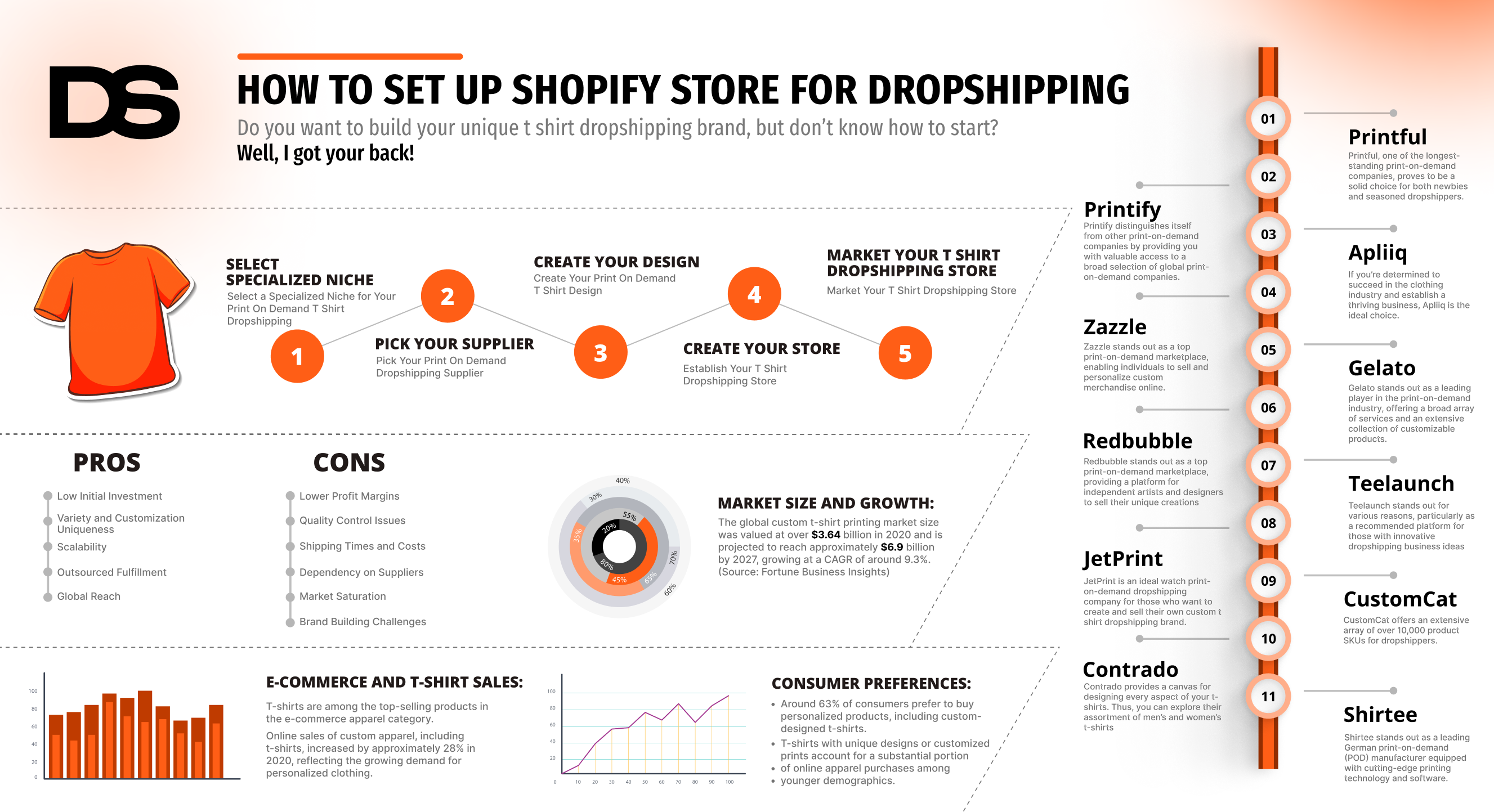
Picture this: you create a compelling design, upload it onto your online store, and a customer places an order.
So, instead of having boxes of stock collecting dust in a warehouse, the product is only printed after the order is placed.
Thus, the print-on-demand service then takes care of printing, packing, and shipping it directly to your customer. Yes, it’s as simple as it sounds.
Furthermore, there are numerous print on demand companies like Printful, or Printify that offer excellent services and potential for earning profits.
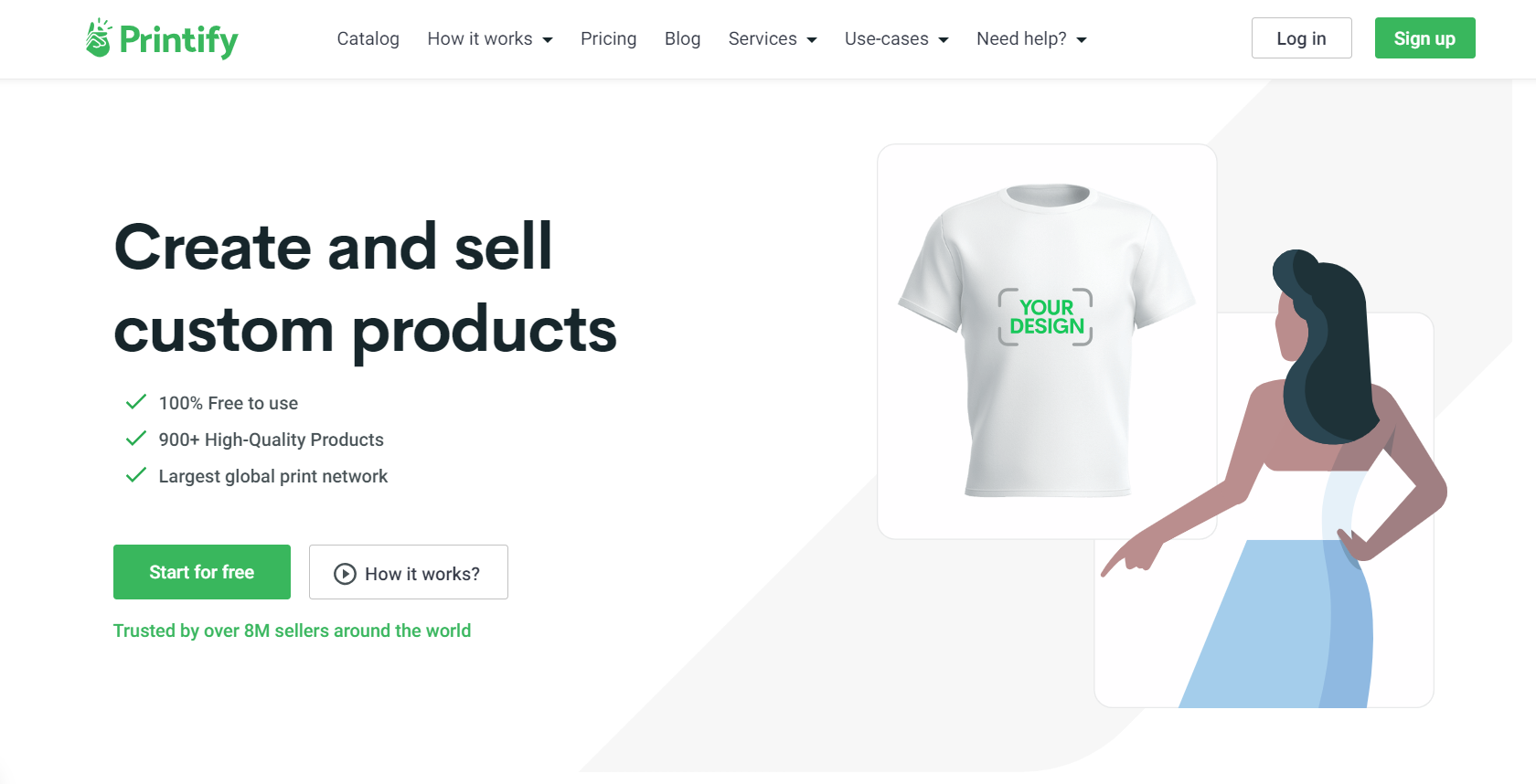
 The Advantages of Using Print-on-Demand Services for Your Inventory-Free Storefronts
The Advantages of Using Print-on-Demand Services for Your Inventory-Free Storefronts
Print-on-demand is not just about simplicity; it comes packed with several benefits:
- No Inventory: With print-on-demand, you can say goodbye to unsold stock.
- Low Startup Costs: You only pay for a product after it’s been sold.
- Customization: Designing your own products gives you creative control over your brand.
- Ease of Use: Most print-on-demand services integrate seamlessly with popular ecommerce platforms.
However, no business model comes without challenges.
 Challenges to be Aware of in Print-on-Demand Business Model and How to Address Them
Challenges to be Aware of in Print-on-Demand Business Model and How to Address Them
Some potential hurdles include:
- Product Quality Control: As you don’t handle the products personally, there might be inconsistencies in quality.
- Shipping Times: Some print-on-demand services might have longer delivery times.
- Profit Margins: Compared to bulk-purchasing inventory, profit margins may be lower.
To mitigate these challenges, thorough research is key. So, choose a reliable print-on-demand service with positive reviews and reasonable shipping times. Also, consider your pricing strategy wisely to ensure profitable returns.
 How Does Print-on-Demand Work?
How Does Print-on-Demand Work?
You might be wondering, what’s the step-by-step process of print-on-demand? Let’s break it down:
- Product Design: Create your unique design using graphic design software.
- Upload Designs: Upload the design onto your chosen print-on-demand platform and choose the type of products you want to sell (t-shirts, mugs, etc.).
- Customer Orders: When a customer orders a product, the order is sent to your print-on-demand service.
- Printing & Shipping: The service prints, packs, and ships the product directly to your customer.
For example, Printful gives you lots of ways to customize each product. You decide where the print goes, choose the size, and pick from many colors.
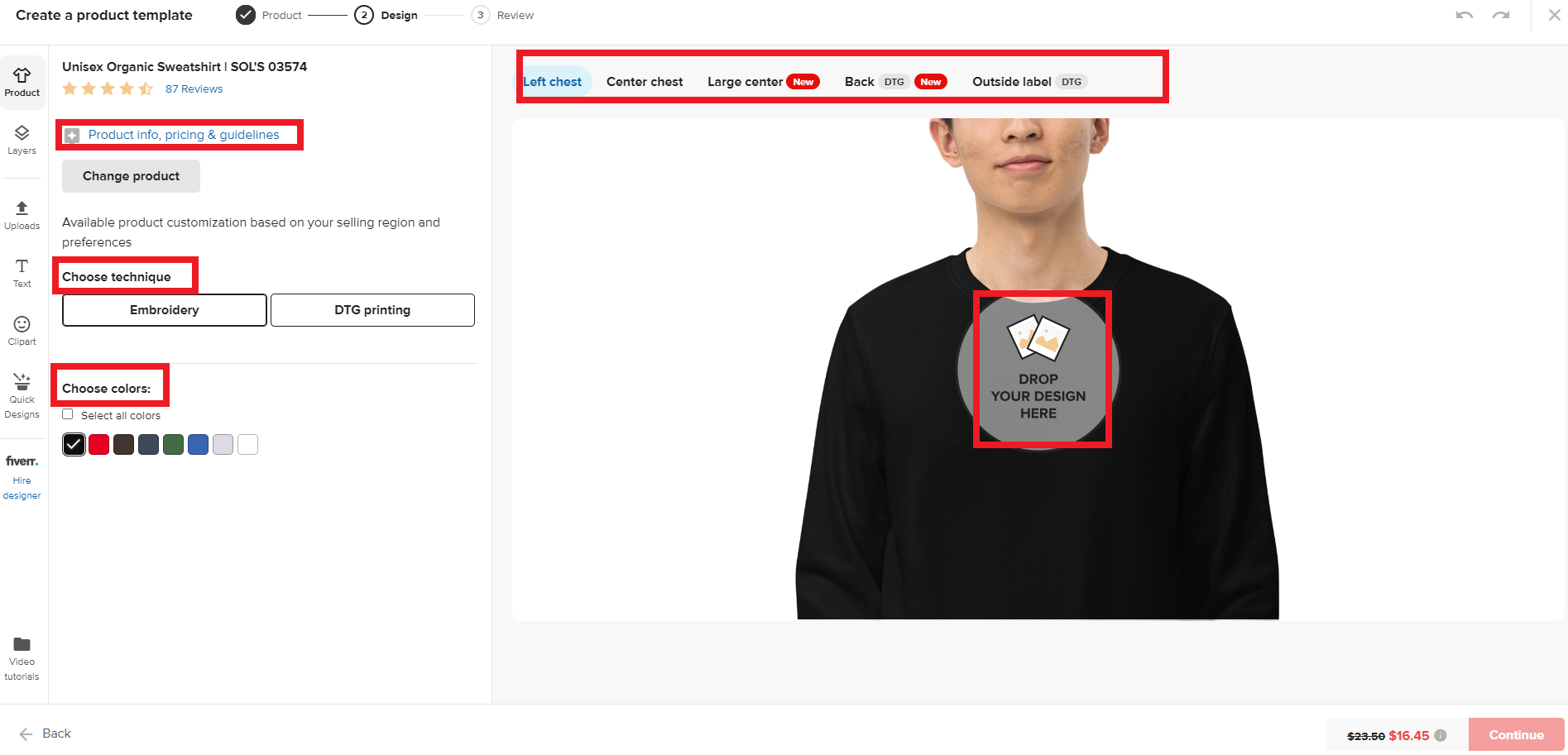
On top of that, you can make your own templates for your products, simplifying their use anytime you need. Moreover, Printful offers various branding choices and ships your orders within 3-7 business days.
And just like that, you’re in the business of selling custom products without ever touching stock!
So, if you’re passionate about creating unique designs and building a brand around them, print-on-demand could be your ticket to ecommerce success in 2025!
Selling Knowledge: Leveraging Digital Products and Online Courses
Selling digital products and online courses is an attractive option among inventory-free business models.
Thus, if you are wondering how to start an online store without inventory, this is one solution.
It involves creating and selling digital assets like e-books, software, graphics, music, or educational courses.
For instance, websites like Amazon, Envato Market, Creative Market, and Etsy offer a wide range of digital products such as graphics, templates, music, and more.
In addition, Amazon has a section for digital products where you can sell items like eBooks, digital music, and software.

 Why Sell Knowledge-Based Products in Your Online Store? The Pros
Why Sell Knowledge-Based Products in Your Online Store? The Pros
Selling knowledge-based products in your online store offers several benefits:
- Cost-Efficiency: You don’t need physical storage or worry about shipping.
- Passive Income: Once you’ve created your product, it can continue generating income without much extra effort.
- Scalability: There’s potential to reach a global audience without being limited by inventory.
This model stands out because of its ability to scale quickly and low operational costs.
So, once you’ve created a digital product or course, you can sell it indefinitely without worrying about restocking inventory. It’s an appealing prospect for those with knowledge and skills they’re eager to share.
 Challenges Faced When Creating and Selling Digital Products
Challenges Faced When Creating and Selling Digital Products
However, challenges await those who venture into this domain:
- Time-Consuming Product Creation: Depending on the complexity of the product, the creation process can be time-consuming.
- High Competition: Popular niches often have high competition, making it harder to stand out.
 Overcoming Challenges in Creating and Selling Digital Products
Overcoming Challenges in Creating and Selling Digital Products
Here are some solutions to address these challenges:
- Time-Consuming Product Creation: Plan your content creation strategically; consider hiring freelancers or using tools that streamline the process.
- High Competition: Conduct thorough market research to find less competitive niches; focus on creating high-quality products that stand out.
Despite these hurdles, selling digital products and online courses remains a viable strategy for those seeking to start an online store without holding inventory.
Conclusion
Embarking on the journey of starting an online store without inventory opens doors to a world where scalability meets reduced financial risk. This model is a game-changer for entrepreneurs who are eager to dive into ecommerce without the heavy burden of upfront costs associated with traditional inventory management.
Here are some inventory-free business models that can help you get started:
- Dropshipping: A streamlined pathway from supplier to customer, bypassing the need to stock products.
- Affiliate marketing: Promote others’ products and earn commissions without ever touching the merchandise.
- Print-on-demand: Create unique products without the financial gamble of bulk orders.
- Digital products: Leverage your expertise or specialized knowledge to create and sell digital goods.
Each method has its own advantages, showing that success in ecommerce doesn’t depend on physical inventory but on innovation and strategic thinking.
These models allow entrepreneurs to:
- Craft an online presence that resonates with their target audience
- Maintain flexibility and adaptability in their business operations
By embracing these inventory-free approaches, you position yourself at the forefront of ecommerce evolution—a place where agility is rewarded and barriers to entry are significantly lowered.














![The Top 21 3PL Companies Compared [2025 List & Guide]](https://images.weserv.nl/?url=https://prod-dropshipping-s3.s3.fr-par.scw.cloud/2024/03/Frame-3922469.jpg&w=420&q=90&output=webp)